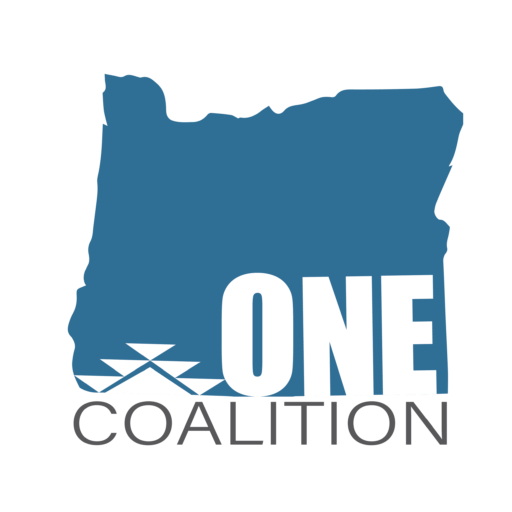Individual Coverage Options
Marina Cassandra (00:00):
Now we’ll look at individual coverage options for folks who don’t have coverage or folks who are self employed or entrepreneurs. We’ll look at public versus private coverage. Public medical coverage is usually a state or federally funded or both. Such as Medicare, Medicaid, CHIP, which stands for the Children’s Health Insurance Program and Veterans Benefits. Private medical coverage is purchased mostly with private funds by individuals, families, employers, for employees and other groups. The Oregon Health Plan is Oregon’s version of Medicaid, and it’s a state-based medical coverage. All covered services are available at no cost, and there is no premium. Eligibility for OHP or the Oregon health plan. It’s based on family income, household size, age, and immigration status. So for age, it’s available to Oregonians ages zero through 64, because at 65 they become eligible for Medicaid. Immigration status will also be used to approve eligibility. Um, there are several immigration statuses that qualify, but not all do. If someone is income eligible for the Oregon Health Plan, but not eligible due to immigration status, they can shop on the marketplace. For the Oregon Health Plan, enrollment is available year round. CAWEM stands for Citizen Alien Waived Emergent Medical. And it is an emergency only coverage and is not considered minimum essential coverage.
Marina Cassandra (01:44):
Medicare is a health insurance program for people 65 years of age and older people younger than 65 with certain disabilities. It’s administered federally. You would sign up through social security.
Marina Cassandra (01:58):
Individual insurance plans can be purchased for a single person, a couple or a family they’re called individual plans because they are not purchased by a group such as an employer, but on an individual basis for households. It can be purchased directly through an insurance company, healthcare.gov or an insurance agent. They have specific enrollment periods and they must meet minimum essential coverage requirements. Minimum essential coverage means coverage that includes 10 essential health benefits and pays an average of 60% or more of those benefits.
Duane Lane (02:38):
I had a question on that last slide, please, Uh, regarding, uh, regarding purchasing directly through an insurance company for an individual plan. Um, would that be the individual is just searching the, each insurance company website,
Duane Lane (03:00):
Certainly, or they might call their toll free numbers. Sometimes an insurer, a consumer might want to compare plans for how much it would cost them. Um, you know, from one carrier to another compare, what it would cost them on or off market meaning on the marketplace or not. And sometimes they can buy something directly through an insurance company that might be even more affordable than what they could get on the marketplace, but maybe that insurance company isn’t participating in the marketplace. So these are a couple of different options, but I will, I will, uh, indicate a very important distinction if someone is looking for tax credits to help pay for the premium or cost sharing reductions. So that when we talk about, if you are going to go for tax credits to help reduce the premiums or cost sharing reductions to increase, reduce the cost of care when you seek services, that is only available through healthcare.gov, because that tax credit is in cooperation with the IRS and the IRS and healthcare.gov communicate with each other to apply those tax credits immediately to the premium. So, um, that is the only way that you can actually get those cost savings. So folks who aren’t eligible for.
Marina Cassandra (04:22):
Yeah, go ahead.
Duane Lane (04:23):
Yeah, no, I think you’re just going to touch on it right now for folks that are not eligible for tax credit. Uh, so someone who makes, you know, uh, a livable wage income?
Marina Cassandra (04:33):
I would say that there are, um, through the American rescue plan, there are any counts, the affordability now that folks who did not get help before can get help now, um, tremendously. So before we had a cap of 400% of the federal poverty level, that cap has been removed. And so basically, um, you pay a certain percentage of your household income towards your medical insurance and that way, um, folks who even make more than 400% are also able to get some help in certain circumstances. That is if that percentage is more than the cost of the coverage, they’re not going to get help with the coverage, but for those, um, even, even for a little bit better than a livable wage, um, we can get some help.
Duane Lane (05:21):
Wonderful, I understand, thank you.
Collin Gabriel (05:21):
So it sounds like the, the individual plans through the insurance companies is sort of the alternative. Once you you’ve exhausted the, uh, the options that are available, maybe on, um, healthcare.gov, if you wanted to go seek something outside of that, um, or your income is exceeds it, something like that, this would be the option, the route to take.
Duane Lane (05:42):
Yeah, or if you use, if you use our window shopping tool to estimate how much financial assistance you can get, but the cover, maybe the plan that you want, maybe you want, um, coverage from an insurance company who doesn’t participate, because they’re the only ones who cover your provider. And then you might want to also go direct in that, in that case.
